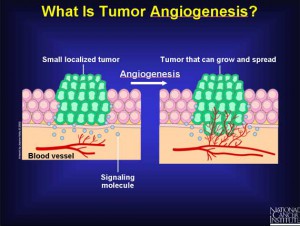
Medicine is a balancing act; how much of a drug is too much? A group of compounds called EETs provide a clear example of the possible dangers of giving patients too much of a good thing. (chris grabert/Flickr)
Usually when your doctor talks to you about lipids, he or she is talking about cholesterol (be it the good or bad kind). But cholesterol is only one kind of lipid. There are millions of these fatty molecules working in everyone’s body right now.
One family of lipids, known as EETs (or epoxyeicosatrienoic acids), is produced by the endothelial cells that line blood vessels, where they help control inflammation and the response to injury. Because EETs are also potent regulators of blood pressure, pharmaceutical companies are looking intently at compounds that raise bloodstream EET levels as a way of managing the cardiovascular aspects of more than 20 conditions, ranging from diabetes and stroke to kidney and eye diseases; some are currently in clinical trials.
There may be a catch, however: Some studies suggest that EETs promote angiogenesis, or blood vessel formation, and that the enzymes that process EETs have a relationship to cancer.
Dipak Panigrahy and Mark Kieran of Children’s Vascular Biology Program and the Dana-Farber/Children’s Hospital Cancer Center wanted to understand this relationship better: Could boosting EETs be dangerous?
“Many people have dormant tumors that may never become fully malignant,” Panigrahy explains. “The switch from a dormant to an active state is critically dependent on angiogenesis, as is metastasis, and so patients who have a high cancer risk could potentially increase that risk further by raising their EET levels.”
Kieran, Panigrahy and researchers at the National Institute of Environmental Health Sciences decided to investigate the EET-cancer relationship directly by increasing natural EET production, injecting EETs systemically, and blocking EETs in a mouse model. “EETs have primarily been studied in models of cardiovascular disease,” says Panigrahy. “This is the first time that direct administration of exogenous EETs and of specific EET antagonists has been investigated in pre-clinical cancer models.”

Dormant tumors need angiogenesis in order to grow and spread. Panigrahy and Kieran's work suggests that EETs can kickstart this process. (NCI)
What they found seems to confirm that with EETs there can be too much of a good thing. Increasing EET levels created an environment within the mice that promoted tumor growth, even to the point of activating small, dormant tumors. The team also found that EETs could work in concert with VEGF, a powerful pro-angiogenic protein, to promote metastasis even in tumors that don’t typically spread to other organs. Conversely, lowering EET activity reduced both tumor growth and spread.
Kieran feels that this study holds a cautionary tale for drug developers, the moral of which is to understand the biology of the compounds they’re developing as fully as possible. “There are many biochemical roadways for processing lipids,” says Kieran. “Two have been extensively studied by the pharmaceutical industry, and form the basis for the drug trials going on right now.
“However, there’s a third one – sort of the dirt road to the other pathways’ multilane highways – that has received very little attention,” he continues. “This third path is the one we looked at, the one that leads to tumor activation and metastasis.”
While this may be bad news for patients seeking to reduce their blood pressure, Kieran sees a silver lining for cancer patients: “With these findings, we now have a better idea of how cancers drive themselves, opening up a new pathway for understanding and potentially treating cancer and metastasis that wasn’t available to us before.”







